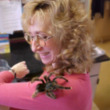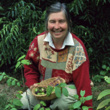The Hidden Life of Trees: What They Feel, How They Communicate
Description
Waterstones Non-Fiction Book of the Month (September)
Are trees social beings? How do trees live? Do they feel pain or have awareness of their surroundings?
In The Hidden Life of Trees Peter Wohlleben makes the case that the forest is a social network. He draws on groundbreaking scientific discoveries to describe how trees are like human families: tree parents live together with their children, communicate with them, support them as they grow, share nutrients with those who are sick or struggling, and even warn each other of impending dangers. Wohlleben also shares his deep love of woods and forests, explaining the amazing processes of life, death and regeneration he has observed in his woodland.
A walk in the woods will never be the same again.
For those in the UK with a passion for top books on nature, Wohlleben's great work merges the worlds of plants, gardening, and general ecology into an absorbing narrative that underscores the importance of environmental conservation and protection. It is a significant addition to the literary conversation on how we interact with the living world around us. For fans of Suzanne Simard (Finding the Mother Tree), Tristan Gooley (How to Read a Tree), Merlin Sheldrake (Entangled Life) and Isabella Tree (Wilding) and Robin Wall Kimmerer (Braiding Sweetgrass).
As a Sunday Times bestselling book, The Hidden Life of Trees is a testament to Peter Wohlleben's deep understanding of nature, plants, and ecology. His passion for environmental conservation and protection is evident in every page, making this a must-read for anyone interested in these topics.
For fans of Suzanne Simard (Finding the Mother Tree), Robin Wall Kimmerer (Gathering Moss), Tristan Gooley (How To Read Water), Yuval Noah Harari (Sapiens A Graphic History, Volume 3), and Isabella Tree (Wilding).
More Details
Subjects
Also in this Series
Published Reviews
Library Journal Reviews
After a lifetime managing and studying forests in his native Germany, Wohlleben shares his distinct perspective on trees in this heartfelt homage. He traces the life cycles of typical trees in central European forests, combining his personal observations with elements of folkloric wisdom and the latest scientific research. In a touch of whimsy, the author likens plant behavior to familiar aspects of human actions: tree species nourishing members of the younger generation by feeding them soil nutrients are tree "mothers"; individual trees that protect and communicate with one another via a rich underground network have formed "friendships"; and urban trees growing up miles from traditional forests are dubbed "street kids." Wohlleben laments the many failings of traditional forest management practices, arguing that patience and ecological balance are essential to maximizing trees' beneficial role in the global ecosystem. In this spirited exploration, he guarantees that readers will never look at these life forms in quite the same way again. VERDICT Those with some background in biology or ecology will be best positioned to glean insight here, but even general readers will gain a rich appreciation of a forest's dynamism.—Kelsy Peterson, Forest Hill Coll., Melbourne, Australia
[Page 104]. (c) Copyright 2016 Library Journals LLC, a wholly owned subsidiary of Media Source, Inc. No redistribution permitted.Publishers Weekly Reviews
This fascinating book will intrigue readers who love a walk through the woods. Wohlleben, who worked for the German forestry commission for 20 years and now manages a beech forest in Germany, has gathered research from scientists around the world examining how trees communicate and interact with one another. They do so using a variety of methods, including the secretion of scents and sound vibrations to warn neighboring plants of potential attacks by insects and hungry herbivores, drought, and other dangers. The book includes a note from forest scientist Suzanne Simard of the University of British Columbia, whose studies showed that entire forests can be connected by "using chemical signals sent through the fungal networks around their root tips" and led to the term "the wood-wide web." Wohlleben anthropomorphizes his subject, using such terms as friendship and parenting, which serves to make the technical information relatable, and he backs up his ideas with information from scientists. He even tackles the question of whether trees are intelligent. He hopes the day will come "when the language of trees will eventually be deciphered." Until then, Wohllenben's book offers readers a vivid glimpse into their secret world. (Sept.)
[Page ]. Copyright 2016 PWxyz LLC




































